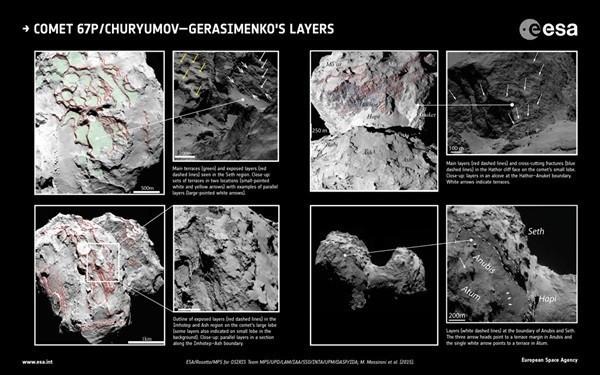Scientists identify how Comet 67P got its shape
Scientists have been investigating what gave Comet 67P/Churyumov-Gerasimenko its weird rubber ducky shape. How the comet came to have the shape has been a question since Rosetta first offered up images of the strange shape back in 2014. Scientists have now decided that the odd shape came from a low speed collision.
According to the researchers, the distinctive double lobed rubber ducky shape came from a low speed collision of two separate and fully fledged comets. The discovery was made after intensive study of images sent back between August 6, 2014 and March 17, 2015.

The high res images allowed the team to study the material seen around the nucleus of the comet. Both lobes have an envelope of material in distinct layers. The scientists think those layers extend hundreds of meters below the surface of the comet. To reach their conclusions scientists identified over 100 terraces on the surface of the comet and parallel layers of material in exposed cliff walls and pits.
That data was used to create a 3D model to determine the direction they are sloping and visualize the subsurface. The team says that the features are coherent and extend to a depth of about 2,100 feet. The investigation noted that erosion isn't the cause of the strange shape of the comet, and definitively showed that the odd shape is the result of a "contact binary."
SOURCE: Astronomy
